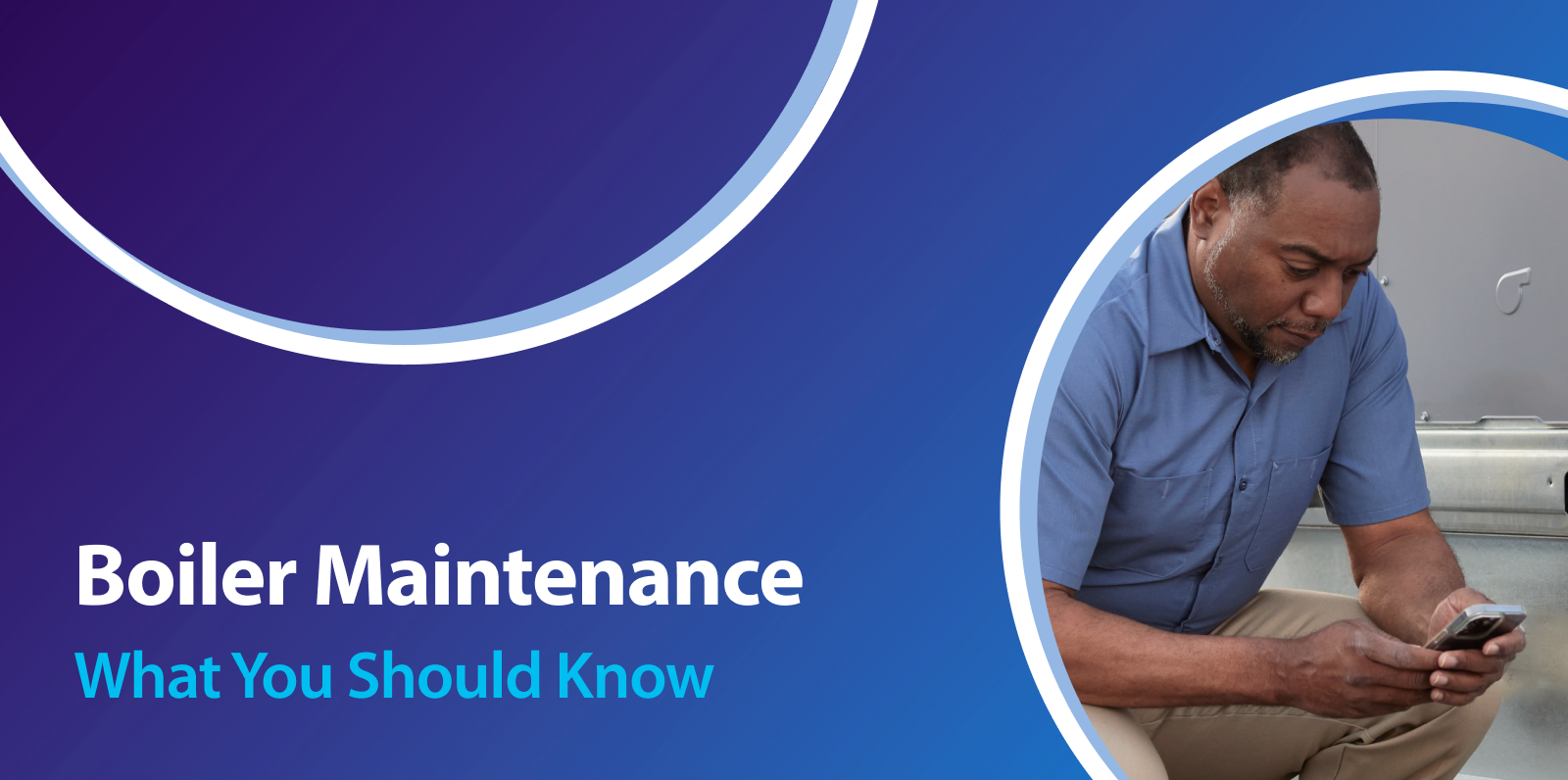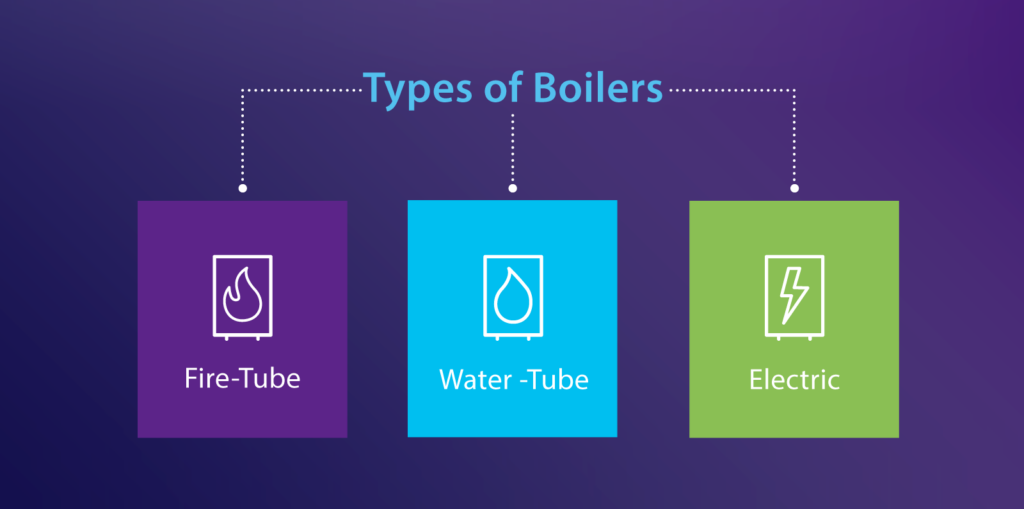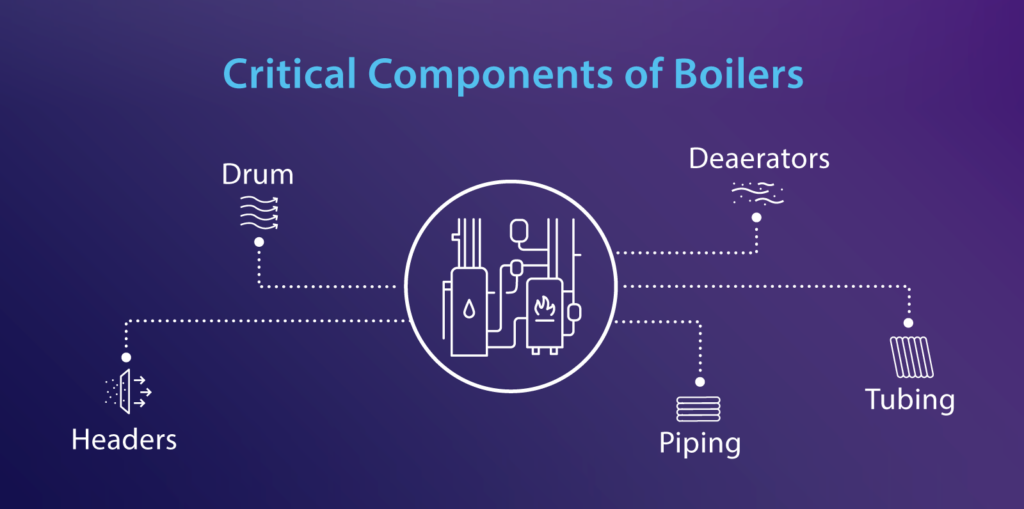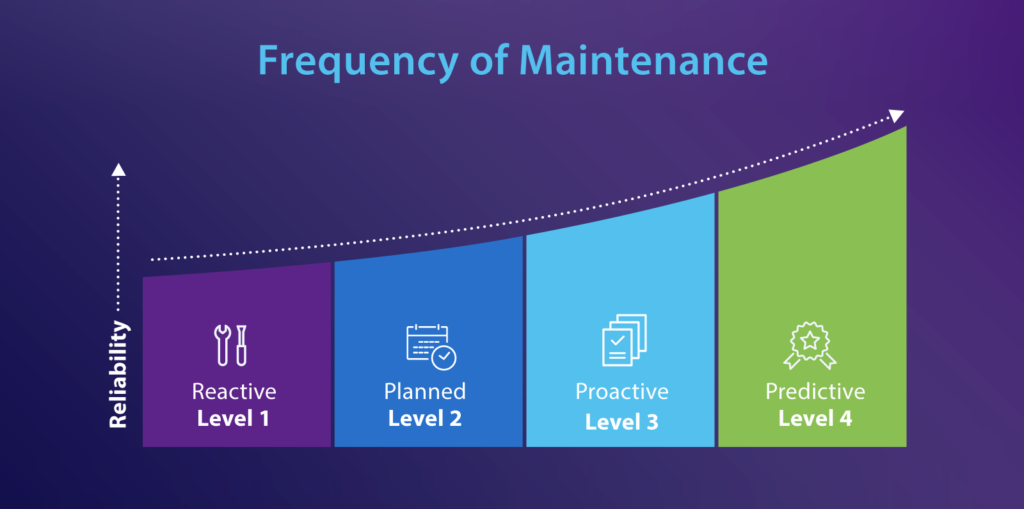Boiler Maintenance: What You Should Know

Boilers are responsible for generating hot water or steam. They operate under extreme pressure and high temperatures. Because they need to function in extreme conditions, boiler preventive maintenance is vital to keeping them running as they should. The last thing facilities managers want is a malfunctioning boiler causing problems.
If something goes wrong, they must decide if a repair or replacement is necessary. Proper maintenance can prevent the need for an expensive replacement. A malfunctioning boiler can manifest in several ways:
- A faulty thermostat that causes the boiler to shut down incorrectly
- A non-working pilot light
- A build-up of lime scales and mineral deposits
- Water leaks
- Circulator pump failure
Below is a guide to understanding your boiler and properly conducting preventative boiler maintenance for safety and reliability.
Types of Boilers

The type of boiler found in facilities varies depending on building needs. The most important thing for facility managers is that they understand what to expect from their system and what can go wrong. That helps guide them in setting up the right boiler maintenance plan to keep it running efficiently.
There are a lot of factors to consider when it comes to evaluating boilers. Each has essential components that must be checked to ensure they’re working correctly and not in danger of causing a critical malfunction.
Fire-Tube
Fire-tube boilers pass hot gasses from a fire through tubes that run through a sealed water container. The heat gets transferred through its walls using thermal conduction, which warms water or creates steam.
Water-Tube
Water-tube boilers contain glass tubes that pass water and are surrounded by hot combustion gasses. The design of water-tube boilers helps them withstand higher pressures. The ability to operate under more extreme conditions makes water-tube boilers ideal for residential and industrial use.
Electric
Electric boilers rely on electronically heated elements to generate hot water or steam. You’ll typically find them used within heating, ventilation, or air conditioning (HVAC) applications.
Critical Components of Boilers
Now that we understand the various categories of boilers, let’s look at the critical components that help them run. A boiler maintenance checklist lets you track what parts you need to check during your scheduled boiler checkup.

Drum
Drums are water or steam reservoirs found at the upper end of a water tube within boiler water pipes. They keep the steam within the water tubes and operate as a phase separator for the steam and water mix.
Headers
Boiler headers, also called manifolds, operate as outlets for hot fluids. It’s crucial to check headers because they can get deformed because of the constant exposure to fluctuating temperatures and thermal stress.
Tubing
Tubing components, used to transport water or hot gasses, are usually constructed from carbon steel or alloy steel.
Piping
Piping systems should withstand a lot of stress from operating under high heat and pressure conditions.
Deaerators
Deaerators remove oxygen and other gasses from pumpable and liquid components. They also protect steam systems from corrosive gasses by reducing dissolved oxygen and carbon dioxide levels.
Common Boiler Issues
Failing to keep up with boiler preventative maintenance can lead to the following problems with your boiler. The best way you can prevent a lot of the problems outlined below include the following:
Leaks
An unchecked boiler leak can end up causing water damage to your home. The electrical components supporting the unit can also start malfunctioning. The following problems can lead to a leaking boiler:
- Too much boiler pressure
- Corrosion in tanks or pipes
- Seal leaks
- Other faulty components
Corrosion
Corrosion is caused by oxygen in air or water reacting with the metal in your boiler components. Once the oxidation process starts, holes and cavities can form, eventually destroying the metal. Common causes of boiler corrosion include:
- Not conducting boiler maintenance
- Boilers getting exposed to dissolved gasses in boiler water
- Oxygen or carbon dioxide in the boiler water
- Unbalanced water pH
Scaling
Boiler scaling is caused by impurities from water during a heat transfer and landing on the surface of the transport components. It leads to interference with heat transfer and the formation of hot spots.
Foaming
The contamination caused by steam and boiler-water solids leads to the formation of bubbles or froth, also known as foaming. Foam can lower the efficiency of your boiler unit and can be detected with regular boiler maintenance.
Low Pressure
System leaks, a failed component, or other issues can lead to low boiler pressure. If the tension in your boiler isn’t high enough, it won’t function correctly.
Priming
Priming is the carryover that forms in steam droplets. When it lands on boiler components, priming leaves behind salt crystals that lower the energy efficiency of the steam. Leading causes of priming in a boiler include the following:
- Improperly constructed boilers
- Excessive ratings
- Fluctuating steam demands
Unusual Noises
Strange noises coming from a boiler often make people realize something might be off with their unit. Below are examples of unusual noises that can emerge from a boiler:
- Kettling — Banging or clunking noises. Limescale can form a barrier between your heat exchanger and boiler water. The sound happens when water boils up through the scale.
- Gurgling — Typically caused by air getting trapped inside a boiler.
- Whistling — Typically caused by kittling or trapped air within your boiler.
Importance of Boiler Preventative Maintenance
Boilers are an essential part of a home or facility’s heating system. When you conduct regular preventative boiler preventative maintenance checks, you prevent issues from cropping up that could eventually cause the entire unit to break down, leading to costly repairs. While boilers do have a set lifespan, you can ensure you get the most from yours by keeping it in top working condition. That helps ensure you get the most from your boiler as far as efficiency.
If you’re always having to turn up your heat because it never seems warm enough, that can mean there’s an issue with your boiler. Your facility might also have trouble maintaining proper hot and cold water temperatures. Not only are you spending more on energy costs, but you could lose even more money by having to replace your entire boiler unit because of a lack of maintenance.
Other reasons you should have a technician go through a boiler inspection checklist regularly include the following:
- Extend the life of your boiler
- Make boiler operation more reliable
- Reduce wear and tear on your boiler components
- Improve boiler energy efficiency
- Reduce safety concerns for those working near the boiler
How Frequently Should You Inspect Your Boilers?
A professional technician should conduct periodic servicing of your boiler system at least once per year. Ideally, you should plan to ensure your unit is in working order to deal with the summer or winter months, the time when many people experience more extreme temperatures. There are also issues you should have addressed on a more frequent basis.

Daily Boiler Maintenance
A daily boiler maintenance checklist should include checking the burner operation. You should make sure that the fuel and steam pressure are at the correct levels and that there does not appear to be anything wrong visually with your boiler. Keep the observation ports clean when the fire is low, or the boiler is shutting down. It’s also a good idea to test low water cutoff, the boiler level alarm and perform soot blowing to get rid of ash and soot build-up. Below are other issues to check for daily.
- Looking at and documenting error and service codes
- Signs of leaking water
- A review of temperature and pressure readings
- Looking for blockages in the combustion air opening
- Remove obstructions from the vent termination
- Listen for unusual noises or vibrations
- Removing any items that could obstruct the boiler
Monthly Boiler Maintenance
A monthly boiler maintenance checklist typically includes the following:
- Testing the boiler control limits
- Checking that the floor drains function correctly
- Inspecting boiler fresh air inlet screens
- Looking for and removing sludge from the blowdown at the bottom of a boiler
- Testing out flame detection controls
Annually Boiler Maintenance
The following items should be included on your annual boiler maintenance checklist:
- Inspecting the heating system
- Checking and cleaning the boiler heat exchanger
- Making sure there are no problems with boiler wiring or connections
- Ensuring that flame sensors, ignitor, and burn assembly are clean
Stay Ahead of Your Preventative Maintenance With ServiceChannel
Keep track of your boiler maintenance checklists using the ServiceChannel platform. Our facility management software streamlines the handling of services associated with your daily tasks. Learn how you can make facility operations easier with ServiceChannel by scheduling a demo of the product.



